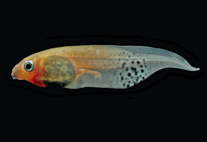Abstract
The last decades have witnessed a rapid increase in our knowledge about amphibian diversity, and a growing number of studies have focused on anuran larval stages. Tadpoles can provide key information for conservation issues and the understanding of amphibian evolution. Moreover, research in tadpoles has the potential to advance species delimitation in the diverse and still understudied Neotropical amphibian fauna. In this study we present morphological tadpole characterisations of 41 lowland species illustrated by detailed imagery (mainly of live specimens). The larvae were identified via captive breeding and genetically using recently published DNA barcodes of adult Bolivian frogs. Tadpoles of three species (Rhinella mirandaribeiroi, Dendropsophus melanargyreus, and D. salli) are described for the first time. The descriptions of 38 tadpoles are at least new for Bolivia (due to the divergent status of many of the Bolivian lineages, further studies are needed to clarify their taxonomy). In addition, we provide information on tadpole habitats, which—combined with morphological data—reveal ecomorphological guilds that further illustrate Bolivia's lowlands tadpole diversity.

